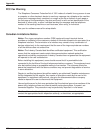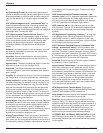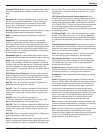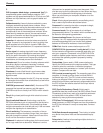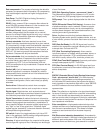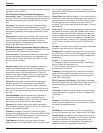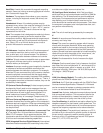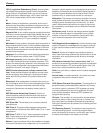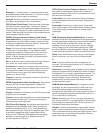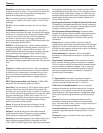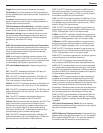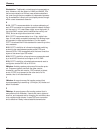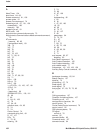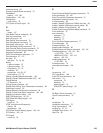
176 MultiModem ISI Hybrid Series, ISIHI-2S
Glossary
LRC (Longitudinal Redundancy Check): An error check-
ing method that generates a parity bit from the specified
string of bits on a longitudinal track. In a row and column
format such as on magnetic tape, LRC is often used with
VRC, which creates a parity bit for each character.
M
Macro: A series of keystrokes, commands, and/or menu
selections that have been recorded and assigned a key or
key combination. When those keys are pressed, the macro
is executed from beginning to end.
Magnetic Disk: A non-volatile computer storage device that
uses one or more magnetic-coated disk platters that can be
recorded over and over again. Hard disks, minifloppies (5-1/
4”) and microfloppies (3-1/2”) are examples of magnetic
disks.
Mainframe: A large, powerful computer used to centralize a
data processing environment. It has hundreds of gigabytes
of storage space. It uses a frond end processor to connect
directly to the communications channels that interconnect
terminals and computers.
Megabyte: One million bytes, when describing a data rate.
1M of disk space may actually mean 1,048,576 bytes.
Mid-range computer: A term coined by IBM, referring to
any of their Advanced Business Systems computers. This
product line was originally called their mini-computers, but
as the number of supported users approached mainframe
capabilities, the term “mid-range” caught on.
MI/MIC (mode indicate/mode indicate common inter-
face): A user definable feature that defines various combi-
nations of edge or level detection in Originate or Answer
mode, with the Ring Indicator (RI) pulse enabled or dis-
abled.
Mnemonics: A term assigned to a complex idea, value, or
list of information which is found to be representative of that
information. Computer commands are almost entirely
mnemonics. Mnemonics are used as memory aids for
people.
MNP (Microcom Networking Protocol): A family of
communications protocols from Microcom that have be-
come de facto standards for error correction and data
compression.
MNP Class 3&4: The de facto error correction standard
from Microcom.
MNP Class 5: The most widely used data compression
scheme before V.42
bis
took hold. MNP5 offers “2-to-1” data
compression.
MNP Class 7: MNP’s “3-to-1” data compression scheme.
MNP7 never became a de facto standard because of
V.42
bis
“4-to-1” compression.
Modem: A communications device that enables a computer
to transmit information over a telephone line. It converts the
computer’s digital signals into analog signals to send over a
telephone line and converts them back to digital signals at
the receiving end. Modems can be internal and fit into an
expansion slot, or external and connect to a serial port.
Modulation: The process of encoding information from one
signal (called the source) into another (called the carrier) by
modifying some characteristic(s) of the carrier. It is often
used in telecommunications when one type of signal must
be converted for transmission over an otherwise incompat-
ible medium.
Multiplexer (mux): A device that merges several signals
into one composite signal for transmission over a single
medium or channel. A de-multiplexer (usually built into a
mux) reverses the process at the receiving end.
N
NAK (Negative Acknowledgment): Communications code
used to indicate that a message was not properly received
or that a terminal does not want to transmit. Contrast with
ACK.
Network: A group of computers connected by cables or
other means and using software that enables them to share
equipment, such as printers and disk drives to exchange
information.
NIC (Network Interface Card - pronounced “nick”): A
printed circuit board that provides the physical and electrical
connection between a PC and a network device (like a file
server) via a network media (like Arcnet UTP).
Node: Any point within a network which has been assigned
an address.
Normal mode: In modem operation, this refers to a mode
of operation without error correction active.
O
OCR (Optical Character Recognition): The recognition of
printed characters and subsequent translation into charac-
ter code for use on a computer. OCR systems can recog-
nize many different fonts, as well as typewriter and com-
puter-printed characters. Advanced OCR systems can
recognize hand printing.
Off-hook: The condition of a device which has accessed a
phone line (with or without using the line). In modem use,
this is equivalent to a telephone handset being picked up.
Dialing and transmission are allowed, but incoming calls are
not answered.
OS (Operating System): The master control program that
runs a computing system. It is the first program loaded
when the computer is turned on, and its main part is called
the kernel and resides in the memory at all times.



